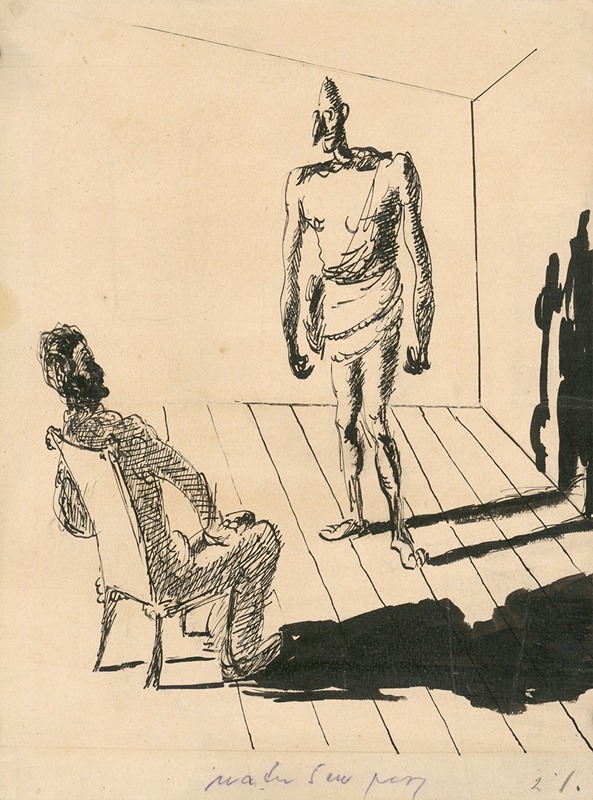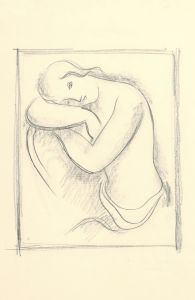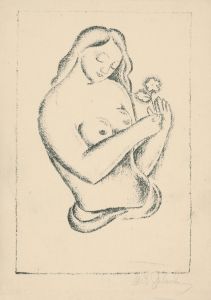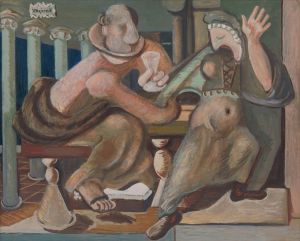
Vízia
A hand-painted replica of Cyprián Majerník’s masterpiece Vízia, meticulously crafted by professional artists to capture the true essence of the original. Each piece is created with museum-quality canvas and rare mineral pigments, carefully painted by experienced artists with delicate brushstrokes and rich, layered colors to perfectly recreate the texture of the original artwork. Unlike machine-printed reproductions, this hand-painted version brings the painting to life, infused with the artist’s emotions and skill in every stroke. Whether for personal collection or home decoration, it instantly elevates the artistic atmosphere of any space.
Cyprián Majerník was a Slovak painter known for his poignant and expressive works, often reflecting the tumultuous times of the early to mid-20th century in Europe. Born on November 24, 1909, in Veľké Kostoľany, Slovakia, Majerník's artistic career was deeply influenced by the socio-political upheavals of his time, including the rise of fascism and the impact of World War II. He studied at the Academy of Fine Arts in Prague, where he was exposed to various artistic movements and developed a style that combined elements of expressionism and surrealism.
One of Majerník's notable works is "Vízia," which translates to "Vision" in English. This painting is emblematic of Majerník's style, characterized by its emotional depth and symbolic content. While specific details about "Vízia" are scarce, it is consistent with Majerník's broader oeuvre, which often features themes of existential angst, the absurdity of war, and the human condition.
Majerník's paintings frequently depict figures in distress or contemplation, set against surreal or dream-like landscapes. His use of color and form conveys a sense of unease and introspection, inviting viewers to reflect on the deeper meanings behind the imagery. This approach is evident in "Vízia," where the interplay of light and shadow, along with the distorted forms, creates a haunting atmosphere.
The historical context in which Majerník worked greatly influenced his artistic vision. The interwar period and the subsequent outbreak of World War II brought about significant changes in Europe, affecting artists and intellectuals profoundly. Majerník, like many of his contemporaries, grappled with these changes through his art, using it as a medium to express his concerns and hopes for humanity.
Majerník's work, including "Vízia," is often seen as a response to the dehumanizing effects of war and totalitarian regimes. His paintings serve as a critique of the political and social systems that lead to human suffering, while also exploring themes of hope and resilience. Despite the often somber tone of his work, there is an underlying message of endurance and the possibility of redemption.
Tragically, Cyprián Majerník's life was cut short when he died on July 4, 1945, at the age of 35. Despite his brief career, he left a lasting impact on Slovak art and is remembered as one of the country's most significant modern painters. His works continue to be studied and appreciated for their emotional depth and historical significance.
In summary, "Vízia" by Cyprián Majerník is a reflection of the artist's response to the challenging times he lived in. Through his unique style and thematic focus, Majerník captured the complexities of the human experience, making his work relevant to audiences both in his time and today. His legacy endures through his contributions to the art world, offering insight into the power of art as a means of expression and commentary on the human condition.


















